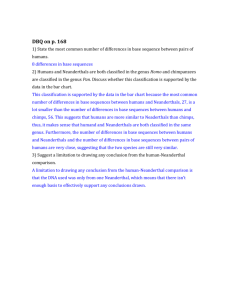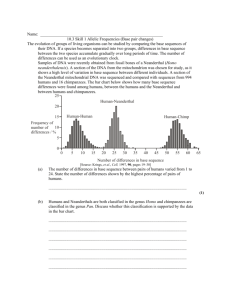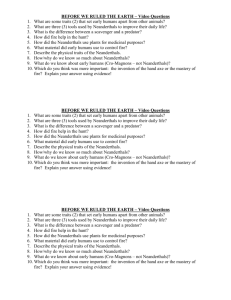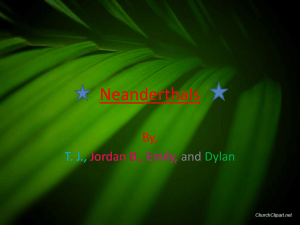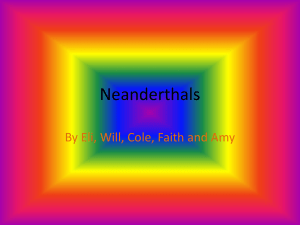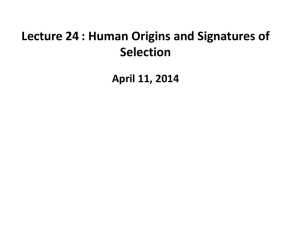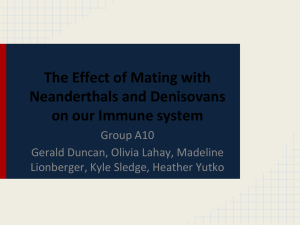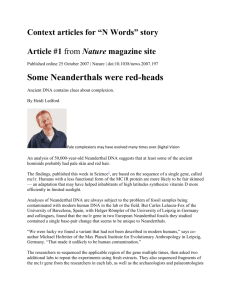Book Review
advertisement
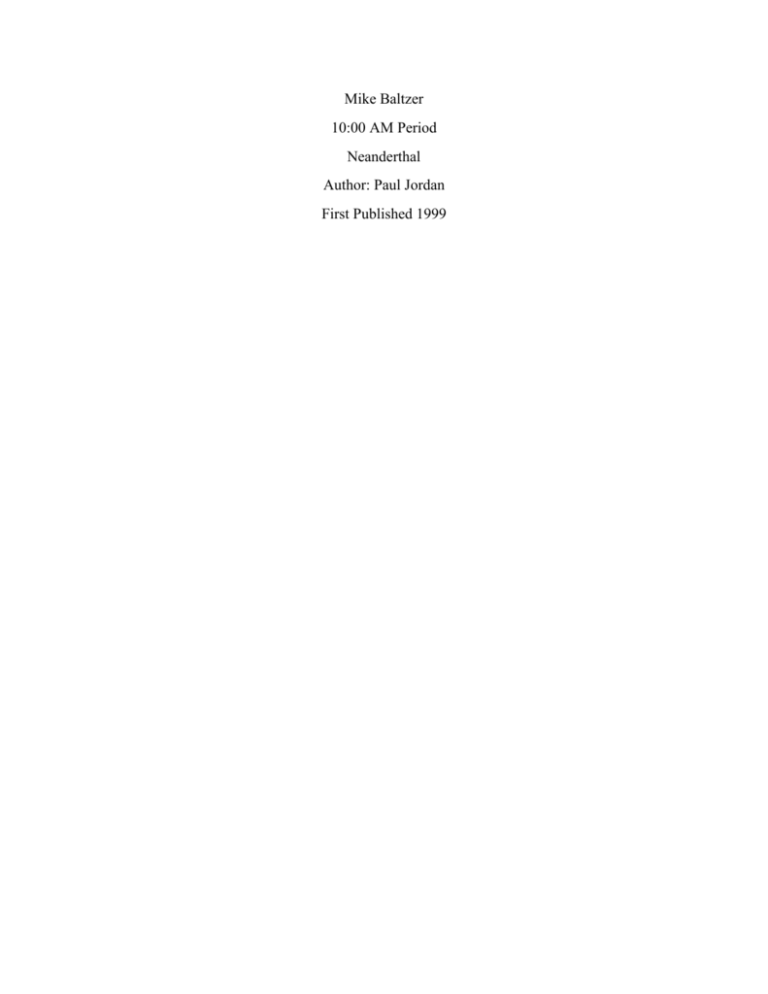
Mike Baltzer 10:00 AM Period Neanderthal Author: Paul Jordan First Published 1999 Neanderthal is a book that states just what it is on the found cover. It is a ‘story of human origins’. Paul Jordan discusses whether or not Neanderthals are a distant ancestor of modern man or if they are simply a cousin of modern man who went extinct. Jordan begins with the discovery of the first Neanderthal in Neandertal, Germany, or what it is called in English the Neander Valley. He goes into great detail about how the remains were discovered with great detail, telling the story of the people involved and what they thought they have found. The beginning of the book also goes into detail about society at the time and what the prevailing idea about the origins of humans and the world as a whole. There is information detailing what people would have thought about the discovery of an ancestor of man. The book mentions Darwin generally avoiding the subject of the human evolution in his book, The Origin of Species. He only made a slight mention at the end. Jordan also covers false finds of Neanderthals and remains of humans that were supposed to pre-date Neanderthals. He talks about both sides of the argument latching onto any find that would support their views of the world. The book continues into more recent finds of Neanderthal remains stating that some of the most significant finds were found in the early 20th Century. The author continues talking about the research of Neanderthal man in the early 1900s, discussing a bit about people trying to distance Neanderthal as far from modern man as possible. At this point, the book starts to turn to how Neanderthals lived, what tools they made and used, and how they lived. It discusses where they lived (mostly caves, but they did make shelters when caves were not an option). They had the use of fire, but it was limited. Their tools were made of stone which fits with the age they lived in, 130,000-30,000 BP. After discussing the life of the Neanderthal man, the author journeys into species that came before the Neanderthal man. He delves into great detail about the similarities and differences between the Swanscombe fragments and what we know about Neanderthals. The author also talks about whether Neanderthals could breed with their contemporaries who were not Neanderthals (DNA evidences suggests no). He works into discussing apes and their evolution into hominids, working into talking about modern chimpanzees and their divergence from modern man’s ancestors and how studying them gives us clues as to how these ancient species lived. The authors steps into the human line of evolution as well as discussing modern man before ending the book in the epilogue and discussing Neanderthals importance to our understanding of our origins. He states that it is unlikely given the time line that Neanderthals evolved into a different species and not likely interbreed with another species and disappeared. The points I found most interesting in the book were the origin story of first discovery of the Neanderthals. I had heard of Neanderthals into my previous schooling, but nothing that went in depth. I didn’t know why they were called Neanderthals or that they were even discovered before Darwin published his book. The book didn’t do the best job at explaining people who were studying Neanderthals or discovering them, but I liked this as it got me looking up these people to get a better understanding of their relation to Neanderthals (Although I must admit that some information or explanations about people rather than dates and places would have been helpful when reading the book). People such as Marcellin Boule who published the first study of a complete Neanderthal. While the book talked about him trying to put distance between Neanderthals and modern man as he didn’t embrace Darwinism but he did have doubts about the Piltdown man and he argued that eoliths were created naturally. The book does a good job of showing how Neanderthals fit into the evolutionary chain of hominids. The author is of the mind that Neanderthals were of the same Genus but are not a subspecies of human. He supports the view that Neanderthals may not have been directly related to modern man, but that they did interbreed. His evidence supporting this view compelled me to look into finding more information about this view as well as the opposing view that Neanderthals should be classified as Homo sapiens neanderthalensis rather than Homo neanderthalensis. Most of the information I found were research papers that were difficult to read. I have mixed opinions on one issue I had with the book. There were a number of terms/abbreviations that I didn’t know so I ended up having to look up that information to understand what the author was discussing. An example of this is the BP abbreviation used when giving dates. I found that BP means ‘Before Present’ and is commonly used when discussing dates involving radiocarbon dating. The quote on the front of the book: ‘an extraordinary archaeological and educational tour of the ancient world’ is a spot on description of this book; however, I’ve only ever had a passing interest in archaeology flew over my head so I had to stop and find definitions for the words. This slowed down my reading of the book, but overall I think it is a net gain as I understand more about archaeology and reading articles and books that use those terms. I found that the class sessions where Neanderthals and ancient man were discussed helped me with reading this book rather than the other way round. As I was reading the book, I would come across information that we went over in class such as the descriptions of the Neanderthals cranial cavity and the jaw line and how they related to the size of the brain. I enjoyed points of the book, specifically where the author was talking about the discovery of the first Neanderthals as well as the forgeries that happened. Other parts of the book were dull in my opinion. The information was good, but it just did not strike my interest. This happened mainly when discussing the species that came before Neanderthal. The book had a positive effect on me in that I’ve been looking for recent articles that discuss our changing theories and information about Neanderthals. I will definitely keep an eye out for any news that mentions our primitive ancestors and cousins.
